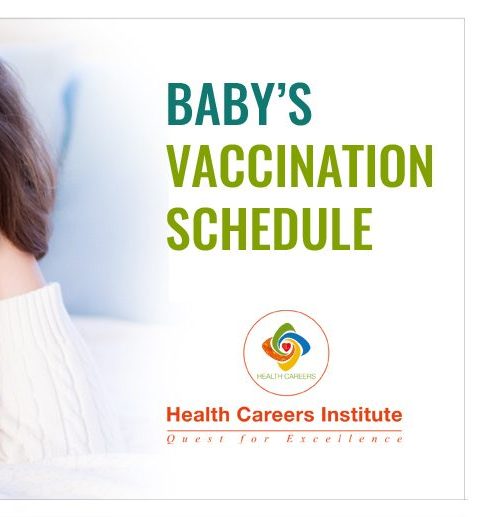
Timely immunization is a proven tool that controls disease, and has even eradicated some deadly diseases. Childhood vaccines are, without any doubt, the most cost-effective healthcare interventions. The effort and money spent on vaccinations in childhood go a long way toward preventing spending on future healthcare. These are the recommendations by the Indian Academy of Pediatrics (IAP) that safeguard your child’s life
INDIAN ACADEMY OF PEDIATRICS (IAP) IMMUNIZATION SCHEDULE
| Age | Vaccines | Prevents |
Comments
|
| At Birth | Bacillus Calmette Guerin (BCG) | Tuberculosis | Administer these vaccines to all new-borns before discharge DPT |
| Oral Polio Vaccine (OPV- 0) | Polio | ||
| Hepatitis B (Hep-B 1) | Hepatitis B | ||
| 6 Weeks | Diphteria,Tetanus,Pertusis | Diphtheria, Pertussis, Tetanus | DTaP vaccine/combinations should preferably be avoided for the primary series. DTaP vaccine/combinations should be preferred in certain specific circumstances/conditions only. No need of repeating/giving additional doses of whole cell pertussis (wP) vaccine to a child who has earlier completed their primary schedule with acellular pertussis (aP) vaccine-containing products. IPV All doses of IPV may be replaced with OPV if administration of the former is unfeasible. Additional doses of OPV on all supplementary immunization activities (SIAs). Two doses of IPV instead of 3 for primary series if started at 8 weeks, and 8 weeks interval between the doses. No child should leave the facility without polio immunization (IPV or OPV), if indicated by the schedule. ROTAVIRUS 2 doses of RV1 and 3 doses of RV5 & RV 116E RV1 should be employed in 10 & 14 week schedule,10 & 14 week schedule of RV1 is found to be more immunogenic than 6 & 10 week schedule |
| (DTwP 1) | |||
| Inactivated polio vaccine (IPV 1) | Polio | ||
| Hepatitis B (Hep-B 2) | Hepatitis B | ||
| Haemophilus Influenzae Type B (Hib 1) | Influenza | ||
| Rotavirus 1 | Diarrhoea | ||
| Pneumococcal conjugate vaccine (PCV 1) | Pneumococcal conjugate vaccine | ||
| 10 Weeks | DTwP 2 | Diphtheria, Pertussis, Tetanus | ROTAVIRUS If RV 1 is chosen, the first dose should be given at 10 weeks. |
| IPV 2 | Polio | ||
| Hib 2 | Influenza | ||
| PCV 2 | Pneumococcal conjugate vaccine | ||
| 14 Weeks | DTwP 3 | Diphtheria, Pertussis, Tetanus | ROTAVIRUS – Only 2 doses of RVII are recommended. If RVI is chosen, the 2nd dose should be given at 14 weeks. |
| IPV 3 | Polio | ||
| Hib 3 | Influenza | ||
| Rotavirus 3 | Diarrhoea | ||
| PCV 3 | Pneumococcal conjugate vaccine | ||
| 6 months | OPV 1 | Polio | HEPATITIS- B The final (3rd or 4th) dose in the Hep B vaccine series should be administered no earlier than age 24 weeks and at least 16 weeks after the first dose. |
| Hep-B 3 | Hepatitis B | ||
| 9 months | OPV 2 | Polio | MMR Measles-containing vaccine ideally should not be administered before completing 270 days or 9 months of life. The 2nd dose must follow in 2nd year of life. No need to give stand-alone measles vaccine |
| Mumps, Measles, Rubella (MMR-1) | Mumps, Measles, Rubella | ||
| 9-12 months | Typhoid conjugate vaccine | Typhoid disease | An interval of at least 4 weeks with the MMR vaccine should be maintained while administering this vaccine |
| 12 months | Hepatitis A (Hep-A 1) | Hepatitis A | Single dose for live attenuated Hep-A vaccine. Two doses for all inactivated Hep-A vaccines are Recommended. |
| 15 months | MMR 2 | MMR The 2nd dose must follow in 2nd year of life However, it can be given at any time 4-8 weeks after the 1st dose VARICELLA The risk of breakthrough varicella is lower if given 15 months onwards |
|
| Varicella 1 | Varicella prevents chicken pox | ||
| 16-18 months | DTwP B1 (Booster dose) /DTaP B1 | Diphtheria, Pertussis, Tetanus | The first booster (4th dose) may be administered as early as age 12 months, provided at least 6 months have elapsed since the third dose. DTP 1st & 2nd boosters should preferably be of DTwP Considering a higher reactogenicity of DTwP, DTaP can be considered for the boosters |
| IPV B1 | Polio | ||
| Hib B1 | Influenza | ||
| 18 months | Hep A 2 | Hepatitis A | 2nd dose for inactivated vaccines only |
| 2 years | Booster of Typhoid | Typhoid | A booster dose of Typhoid conjugate vaccine (TCV), if primary dose is given at 9-12 months. |
| Conjugate Vaccine | |||
| 4 to 6 years | DTwP B2/DTaP B2 | Diphtheria, Pertussis, Tetanus | Varicella The 2nd dose can be given at any time 3 months after the 1st dose. MMR The 3rd dose is recommended at 4-6 years of age |
| OPV 3 | Polio | ||
| Varicella 2 | Chickenpox | ||
| MMR 3 | Mumps, Measles, Rubella | ||
| 10 -12 Years | Tetanus toxoid, Diphteria, acellular pertussis (Tdap/Td) | Diphtheria and Tetanus | Tdap – Is preferred to Td followed by Td every 10 years HPV – Only 2 doses of either of the two HPV vaccines for adolescent/ preadolescent girls aged 9-14 years. For girls 15 years and older, and immunocompromised individuals 3 doses are recommended. For two-dose schedule, the minimum interval between doses should be 6 months. For 3 dose schedule, the doses can be administered at 0, 1-2 (depending on brand) and 6 months. |
| Human Papilloma Virus (HPV) | Human Papilloma Virus |
.
Make sure that you follow this schedule, and keep your child healthy and smiling!

